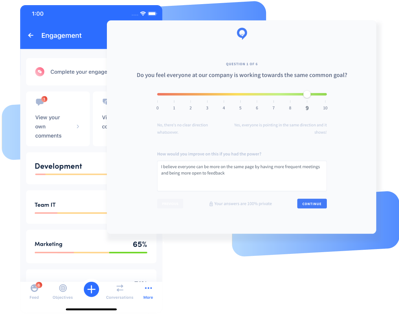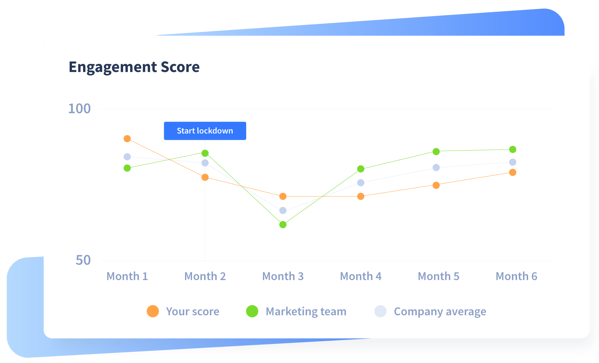
HR questions answered during the pandemic
The Fosway Group, Europe’s #1 HR industry analyst, conducted a rapid research survey during the COVID-19 pandemic focusing on HR Directors, HR managers and HR system professionals primarily from enterprise organizations in Europe. What were the questions the C-suite were asking HR in response to the COVID-19 Pandemic? Read the article to discover the answers.
Once the world entered into curfew, organizations shifted to the remote working mode, and HR leaders had the new responsibility of tracking (remotely) employee wellbeing. But engagement and safety were not the only challenges HR was facing. According to the Fosway group, tracking the impact of the pandemic wasn't easy for HR leaders. Only one in four organizations find it easy to track the effect of COVID-19 on their people, for instance: How many employees are self-isolated or hospitalized? In this research there is another eye-opening finding: Spreadsheets are the second most likely approach to be used as a tracking mechanism. This finding exposed the digital status of HR at the beginning of the pandemic, and that is the reason why only 13% of HR leaders have found it easy to analyze and predict the impact of COVID-19 on their organization.
It is true that the pandemic caught us off guard. However, multiple vendors tried to support HR leaders with free licenses to conduct remote engagement and wellbeing surveys. When teams work remotely, it can be difficult for HR and managers to know how employees are feeling and what their priorities are. Research shows that remote managers and teams struggle in developing clear communication. According to Fosway, 80% of organizations are tracking people's COVID-19 status via managers, so managers are key for the process. But having clear communication channels and an open and safe spaces for employees to share feelings and thoughts is also a key challenge for HR. All these challenges can be solved with the use of employee surveys.
What is a remote employee Pulse Survey?
A Remote Employee Survey is a frequent and short pulse survey that tracks how remote employees are feeling within a company. The questions asked in these surveys can cover different aspects, from remote working to health and safety, which will help managers and HR to understand the engagement, alignment and motivational level of your employees. The insights you get will help you and your managers measure employee satisfaction, engagement and it will help you to detect trends, issues and opportunities. If something is not going well you can act quickly and implement better solutions.

Benefits of remote engagement surveys
- Quick turnaround: because of the frequent use of the surveys you can spot trends and issues faster and also quickly turn those problems around. Your people will appreciate it and you will increase the participation rate.
- More insights, better decisions: 70% of HR professionals believe they do NOT have the skills required to analyze and predict the impact of COVID-19 in their organization. With engagement surveys, you will have multiple dashboards with plenty of insights and multiple suggested actions to support you. This will help you make better informed decisions.
- Increase engagement and retention: As we mentioned in the first point when sending out engagement surveys employees will like that they have a voice and that you listen. By improving their experience at work, you can increase their motivation and engagement levels. That means you will also increase your retention rates.

Help your remote teams stay connected and engaged with the right tool and processes in place. Unit4 Talent Management offers you not only a tool to conduct Engagement Surveys, but it supports you through the entire process. You can select questions from our library or import yours. With our manager toolbox, managers will receive alerts on engagement and also a list of suggestions to improve their teams' engagement.

Learn more about how Unit4 can help
Raise your expectations of what Human Capital Management can do for you and your people. Unit4's solutions are designed to deliver a superior People Experience across your entire organization.





